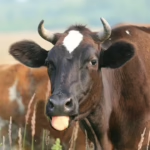Mimicry Masters: The Fascinating Biology Behind Animal Deception
Mimicry, an impressive adaptation found in the animal kingdom, is more than just a superficial resemblance. It’s a captivating demonstration of evolutionary ingenuity that showcases the diverse strategies organisms utilize to survive. From insects to reptiles, mimicry serves various purposes, primarily focusing on predation avoidance, reproduction, and territorial defense. Let’s delve into the intricate world of mimicry, exploring its types, mechanisms, and the remarkable biology behind this form of deception.
Understanding Mimicry
Mimicry can be broadly categorized into two main types: Batesian mimicry and Müllerian mimicry.
-
Batesian Mimicry: Named after the naturalist Henry Walter Bates, this form involves a harmless species evolving to resemble a harmful or toxic species. For instance, the viceroy butterfly (Limenitis archippus) mimics the monarch butterfly (Danaus plexippus), which is toxic to predators. By resembling the monarch, the viceroy benefits from predation avoidance, as predators learn to associate the striking coloration with a bad taste.
- Müllerian Mimicry: This involves two or more unpalatable species that resemble each other. For example, several species of bees and wasps share similar warning colorations. This mutual similarity reinforces the avoidance behavior in predators and benefits all involved species by reducing the number of attacks.
The Mechanisms Behind Mimicry
Form and Function
Mimicry involves various adaptations, including anatomical, behavioral, and chemical similarities.
-
Anatomical Adaptations: Many mimics possess striking physical traits that resemble their models. For instance, some species of stick insects have evolved to resemble twigs, not just in shape but also in color and texture, helping them evade detection.
-
Behavioral Adaptations: In addition to physical traits, animals may modify their behaviors. Cuttlefish, for example, can change their color and texture to blend in with their surroundings or imitate the appearance of other species to confuse predators or prey.
- Chemical Adaptations: In some cases, mimicry involves chemical similarities. Certain harmless species may produce chemicals that mimic the signals of toxic species, deterring predators through deception.
Evolutionary Pathways
Mimicry often arises through natural selection, where individuals that successfully mimic a model experience higher survival and reproductive success. Over generations, these traits become more pronounced within the population. Research into genetic pathways reveals that specific genes may control the coloration and patterns involved in mimicry. Understanding these genetic mechanisms opens avenues for studying how mimicry evolves and can shed light on broader evolutionary processes.
The Role of Environment
Mimicry is not static; it heavily relies on the environment. Changes in habitats can influence the effectiveness of mimicry. For example, the environment’s complexity—such as the abundance of plants or availability of specific prey—can determine which traits are advantageous. Climate change and habitat destruction create new challenges for mimetic species, forcing them to adapt or face extinction. The delicate balance between mimicry and ecological dynamics underscores the interconnectedness of life on Earth.
Fascinating Examples of Mimicry
-
The Orchid Mantis (Hymenopus coronatus): This master of disguise resembles flower petals, allowing it to ambush unsuspecting pollinators. Its ability to mimic both the appearance and movement of flowers highlights the complex interplay between plant and animal mimicry.
-
The Lyrebird (Menura): Known for its remarkable ability to mimic natural and artificial sounds, including chainsaws and camera shutters, the lyrebird uses its talent to attract mates. This auditory mimicry showcases the versatility of deception beyond visual cues.
- The Leaf-Tailed Gecko (Uroplatus spp.): Found in Madagascar, these geckos have extraordinary adaptations allowing them to resemble dead leaves. Their flat bodies and cryptic coloration make them virtually invisible to predators and prey alike.
Conclusion
Mimicry serves as a profound testament to the adaptability and ingenuity of life on Earth. It blurs the lines between predator and prey, survival and extinction, as organisms continuously evolve to outsmart each other. Studying these fascinating biological deceptions not only enhances our understanding of evolutionary processes but also underscores the intricate web of life that connects all living beings. As we explore the marvels of mimicry, we gain a deeper appreciation for the complex strategies that underscore survival in an ever-changing world.
For more detailed insights into mimicry and specific mechanisms, you can refer to contemporary biological literature or [Modern Footnote Source Link].


























Add Comment